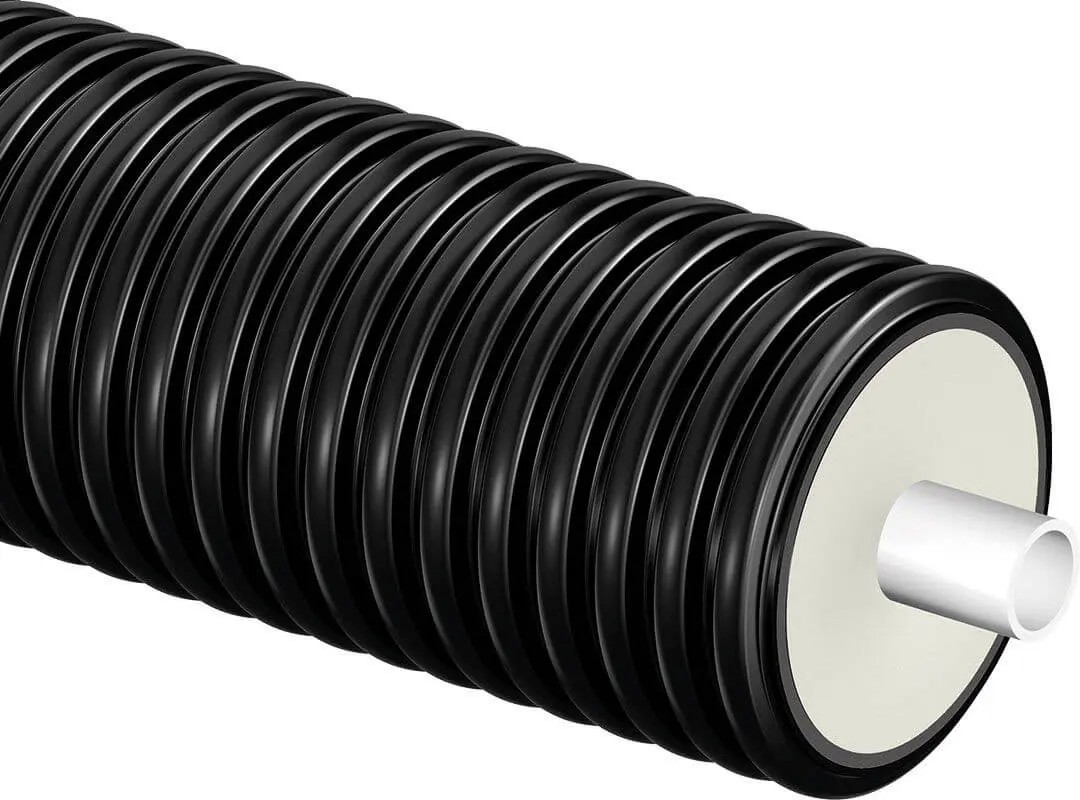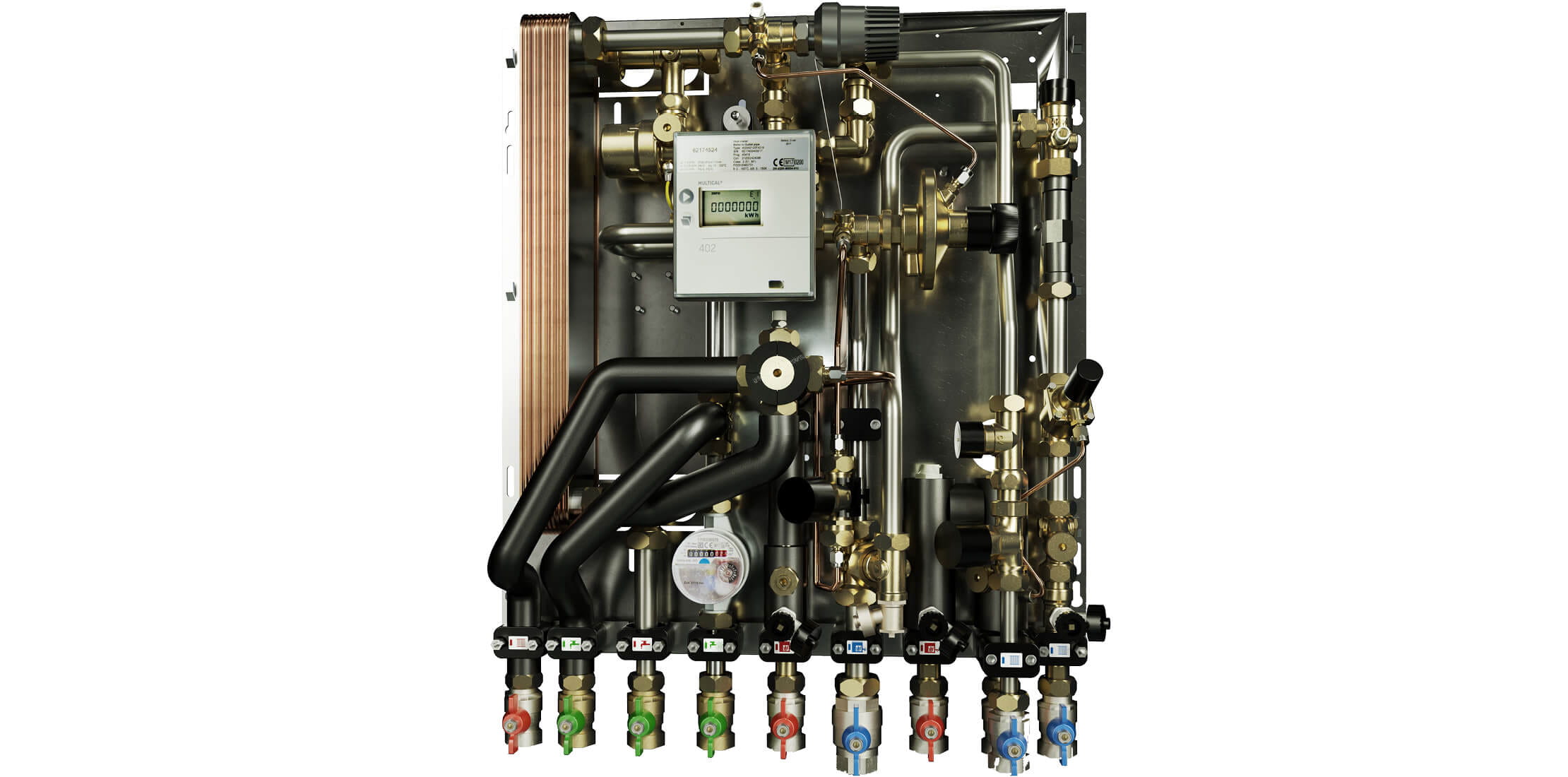District Heating Networks
Environmentally friendly, cost-effective and more continuous heating.
What are District Heat Networks in the UK?
Quite simply, a district heat network can be described as being "a network of pre-insulated pipes which supply hot water from an energy centre to an end users’ home, commercial property or any other multiple residency dwellings". The energy sources can vary, but they tend to be either a power station, biomass/biogas-fueled boilers or a heat pump.
A larger district heat network can supply hot water to a whole community in an energy-efficient way. For example, heat is not wasted along the network as supply can be directed towards an area in high demand. An overall network can be increased where necessary by adding more heat sources.
Uponor UK supplies Pre-insulated pipes for District Heat Networks

Ecoflex
Other benefits include:
- Complete system: Source to building, heating & cooling.
- Lightweight, flexible pipes ideal for central systems (above & below ground).
- Works with any heat source (power plants, boilers, etc.).
- Expert support: Training, design, delivery, on-site.
- 30+ years, 35M+ meters installed globally.
Energy Plan provides a guide on how District Heating Schemes work
What are the benefits of District Heating Networks?
There are multiple benefits of District Heating Networks. Some of the key advantages are summarised below:
Useful resources about District Heating Systems
ADE infographic on heat networks
Understand the heat network market and potential benefits
ADE Market Report 2018
The ADE provide a report into heat networks within the UK
Connecting a Heat Interface Unit to a pre-insulated pipe within a home can result in further energy savings

Heat Interface Units
Find out more about how you can benefit from up to 40% energy savings in your home by installing a Heat Interface Unit.